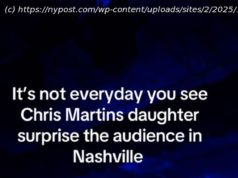It offers something real, tangible, nostalgic and comforting.
They say print is dead. They gave their eulogies and laid it to rest. But I wouldn’t say my goodbyes so soon.
Consider vinyl.
Records were supposed to die at least three deaths: at the hands of the 8-track, the cassette tape and the looming CD. By the rise of MP3s, they should’ve been as easy to find as an 1866 phonograph. Instead, for at least one week in 2016, they outsold digital downloads in the U. K. In 2017, those sales reached a 25-year high. Here in the U. S., people hit record shops and online retailers as hard as ever, increasing sales for the 12th straight year. And after a nearly 30-year hiatus, Sony announced that it would start producing vinyl again.
So, print is here to stay.
Like vinyl, print feels real. Worthy of cherishing and protecting. In your hand, it feels fantastic (and inherently more valuable), sort of an antidote for transience. In a world of pop-ups, it has a reassuring warmth, artfulness and simplicity that spans generations—from before everything was changing faster and faster. At the same time, it’s truly statement-making and becoming increasingly so. A smart, striking print ad can reinforce your value in a way a banner ad never will. Banner ads remind us of scam artists—the price paid for content we enjoy. One accidental click can make you feel betrayed by your own thumbs. Print, on the other hand, is an elite club.
And if you’re a member, it says something about your brand: that it has substance, style, swagger and resources. It provides an advantage to brands looking to square up against heavy hitters and make an impression in their category. When optimized to the fullest, we’ve seen creative utterly transcend the medium to become art. Luxury brands have proven this time and time again, with lush visuals that blur the lines between product and masterpiece. With print as their canvas, the Guccis of the world promoting $3,000 pajamas with a booty flap beckon us into their universe and make the splurge seem even the teensiest bit more justifiable.
But this doesn’t stop at luxury brands. Print creates a sense of gravity for a wealth of categories, especially when the subject is reimagined as an objet d’art. Just look at Absolut’s award-winning work—being a vodka brand didn’t stop admirers everywhere from collecting the award-winning creative with the same enthusiasm as Troll dolls or Pogs. Some emotional attachment microsites just can’t match.
When a medium has the right characteristics, it can thrive within a changing media landscape. And sometimes there’s surprising harmony found there. While early, crude attempts at QR code integration unsurprisingly didn’t catch, good AR in print provides a perfect portal for consumers to enter new realities, its whimsy pairing impeccably with print’s gravity and tradition. Expect to see AR’s role expand and even more imaginative digital connection points emerge, making print a new, more relevant and interactive medium. New old.
Speaking of the new old, consider today’s millennial and Gen Z generations, all coming of age in a time of cycling innovation. None have any reason to grasp at the past, yet they continuously find refuge in what’s classic. Perhaps there’s something about relentless change that drives all of us to find comfort in tradition. And as remarkable as this is to advertisers, our consumers live comfortably with competing ideals: love the new, love the old. It’s how you end up with wireless headphones, vintage Nikes and a copy of a Prince’s commemorative Rolling Stone in your carry on.
I’d sooner bet on us losing Florida to rising tides than on the disappearance of print. Because unlike Florida’s coastline, print can evolve with changing times while holding tight to the unique characteristics that make it oh so special.
And you can print that.
Share
https://adweek.it/2KWGyEV copy
Chris Sojka
@Madwellington
Chris Sojka chief creative officer and co-founder of Madwell.






